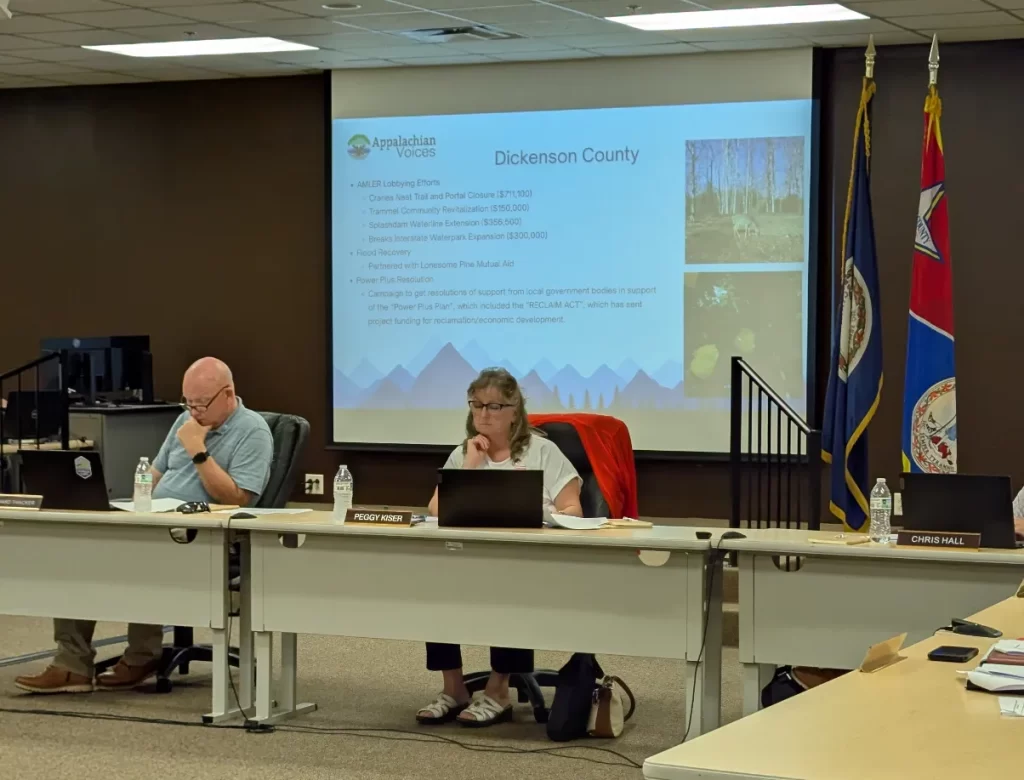Appalachian Voices releases new report on how new clean energy tax credits have benefited Appalachia
FOR IMMEDIATE RELEASE
April 17, 2025
CONTACT
Chelsea Barnes, chelsea@appvoices.org
Dan Radmacher, dan@appvoices.org
Coal Country — Today, Appalachian Voices released its latest report, “Clean Energy Tax Credits: Working for Appalachia.”
As part of the release, Appalachian Voices staff co-hosted a virtual press conference with beneficiaries of tax credits covered in the report, including faith and nonprofit leaders.
These credits include the investment tax credit, energy communities bonus and the domestic content bonus. The Inflation Reduction Act allowed tax-exempt entities like churches, nonprofits and cities to benefit from tax incentives for the first time ever through the direct pay mechanism. Together, these credits have helped groups in Appalachia cover between 30% and 60% of the costs for their solar projects.
The report release comes as the U.S. House and U.S. Senate move forward in developing budget reconciliation bills that could jeopardize these impactful energy tax incentives.
Twenty-one case studies from around Central Appalachia are featured in the report. Some individuals whose projects were highlighted in the report joined the press conference and shared how the energy tax credits allowed them to reinvest in the services their organizations provide.
The tax credits in the IRA are poised to reduce electricity prices for all customer types. According to NERA Economic Consulting, if Congress repealed the tax credits this year it could cause residential electricity prices to increase by an average of 7.3% by 2029.
“This report shows how vital the Inflation Reduction Act’s new and expanded tax credits have been for Appalachia in just the last couple of years,” said Director of Government Affairs and Strategy Chelsea Barnes. “Jobs have been created and electric bills have been lowered. We urge members of Congress to maintain these tax incentives so that the people of Appalachia can continue to reap their benefits.”
“The Inflation Reduction Act’s establishment of the ITC elective payment, or ‘direct pay,’ has leveled the playing field for public institutions and nonprofits to make solar an achievable investment for the first time ever,” said Appalachian Solar Finance Fund Director Autumn Long. “Furthermore, there are additional bonus credits for projects located in federally designated energy communities, projects that use domestic content benchmarks and projects that benefit low-income communities. This is clearly a game-changer for cash-strapped local governments and community-serving nonprofits that operate on shoestring budgets.”
“Our electricity bills specifically had climbed to nearly $36,000 a year,” said Tim Yankey, Director of Howell’s Mill Christian Assembly. “With the help of grants and the IRA credits that were open to nonprofits, we saw this as a big incentive to lower our fixed expenses by investing in Clean Energy and solar panels. We hope to add a second phase of 300 additional panels in the near future, but that decision will greatly depend on if the clean energy tax credits continue.”
“We care deeply about the well-being and sustainability of our church, our congregation and our community, and have been paying close attention to the rising cost of electricity in our community,” said Reverend Doctor Nancy Woodworth-Hill with Lawrencefield Parish Church. “While we loved the idea of harvesting the sun and taking some of the stress off local power plants, the amount of money we could save by going solar — $77,000 over the life of the project — was a deciding factor.”
“We were especially enthusiastic because of the benefit to our low-income renters who will have a section of solar panels directly linked to their individual electric meters, and thus have a great reduction in their electric bills from 50 to 100 percent,” said Linda Mashburn, President of ElderSpirit Development Corporation. “We may be among the first of low-income retirement communities in the country to offer residents this benefit from solar power, and we would not be able to afford it if we hadn’t had the assurance of the tax rebates for nonprofit entities.”



